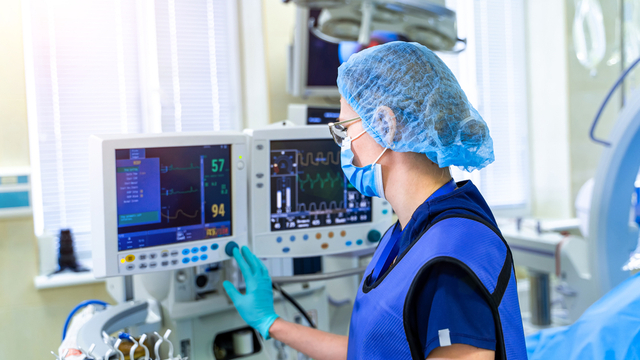Reducing Inefficiencies and Better Managing Resources with Healthcare Asset Tracking
Hospitals have experienced a one-two punch over the last 2 years. Increased workloads and staff illness have increased patient loads and the need to hire expensive replacements. Compounding the financial drain is the delay in lucrative procedures like elective surgeries. It is expected that more than half of hospitals will report negative earnings in 2021, up from 35% pre-pandemic. Medical equipment, whether purchased or leased, represents a large portion of the budget. In 2018, U.S. hospitals spent $200 billion on medical devices, or approximately $12 million per hospital. Efficient use of these physical assets is even more challenging during patient surges and workload overflow.
The Heavy Costs of Equipment Loss and Replacement
The average hospital has 35,000 inventory SKUs. With an average utilization rate of 35%, there is an opportunity for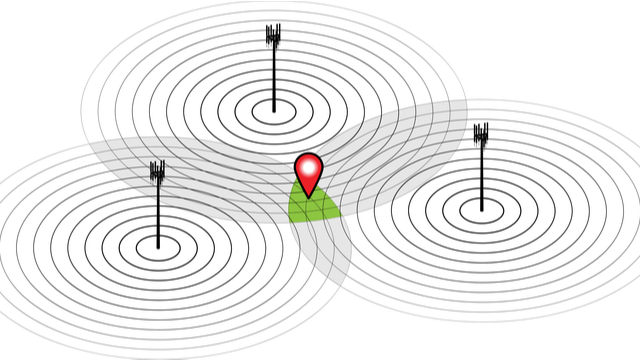 significant cost savings by improving efficiency by only a couple points. But how do you get a handle on utilization and its measurement? As Peter Drucker said, “you can’t manage what you can’t measure”. Healthcare RTLS solutions use radio tags attached to assets to track their location in real time. Using the access points already available, the tag’s signal strength is compared between access points and mathematical triangulation computations determine the tag’s position. As more access points support Bluetooth Low Energy, BLE is starting to replace Wi-Fi as the preferred radio technology. Click here for AiRISTA’s survey of the top 6 applications of healthcare asset tracking.
significant cost savings by improving efficiency by only a couple points. But how do you get a handle on utilization and its measurement? As Peter Drucker said, “you can’t manage what you can’t measure”. Healthcare RTLS solutions use radio tags attached to assets to track their location in real time. Using the access points already available, the tag’s signal strength is compared between access points and mathematical triangulation computations determine the tag’s position. As more access points support Bluetooth Low Energy, BLE is starting to replace Wi-Fi as the preferred radio technology. Click here for AiRISTA’s survey of the top 6 applications of healthcare asset tracking.
Tracking Your Medical Assets
The RTLS market is experiencing a renaissance of sorts. A consolidation of use cases around a common technology is occurring thanks in part to advances in Bluetooth Low Energy® (BLE) and the access point networks that make it ubiquitous. Also driving the renaissance are the billions of devices in the IoT world coming online and require location information. According to the Gartner® forecast for indoor location tracking, “The market for indoor location services is expected to reach global revenue of $55 billion by 2030 up from $1.9 billion in 2021. Asset tracking will be the biggest opportunity in terms of near-term growth and total available market (TAM).”[1] This translates to a staggering 50% CAGR. AiRISTA has identified 6 of the most impactful use cases for healthcare RTLS.
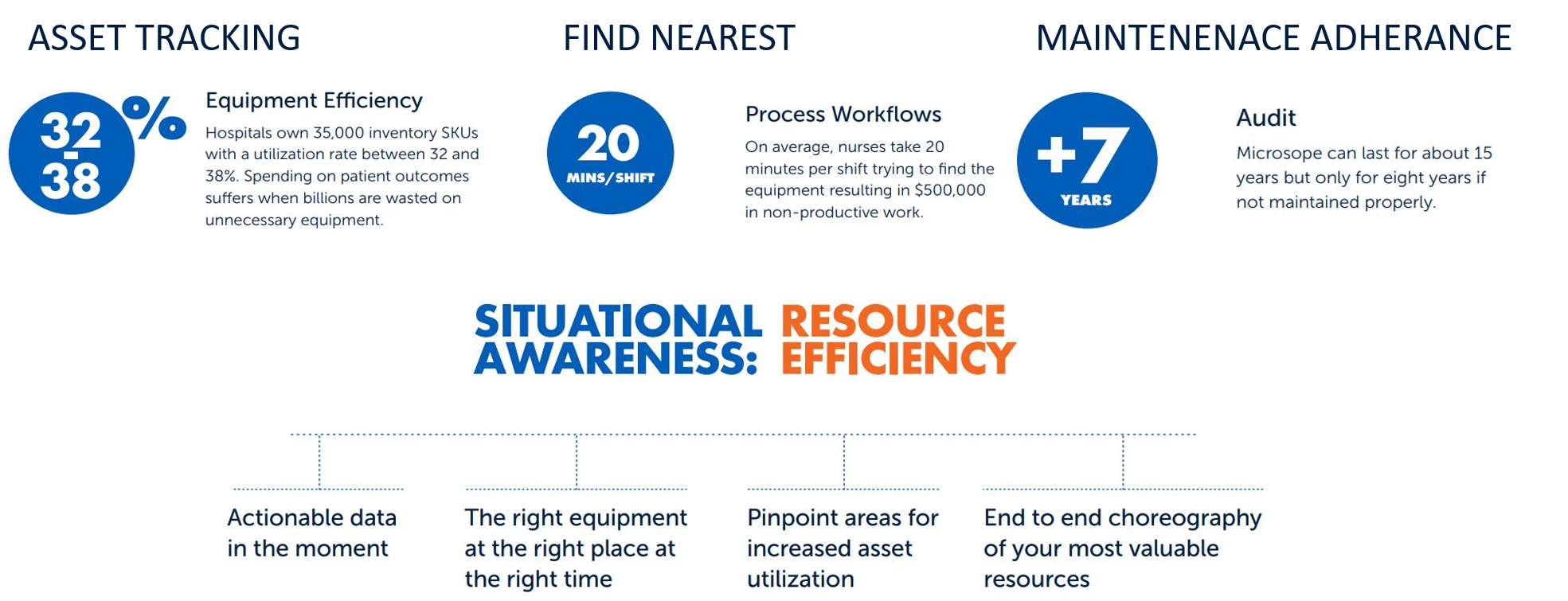
- Locate Needed Equipment. On average, nurses spend 20 minutes per shift searching for equipment. Over the course of a year, this translates to $500,000 in wasted time for the typical hospital. The most common use of an asset tracking solution is to locate the nearest available item in real time. Ideally the solution will position an icon on a floor plan map representing the asset. These searches should also be conditional to combine qualities like “available” or “sterilized”. Because this is the most popular use case, a solution should allow quick entry of a desired asset from any interface in the app.
- Par Level Adherence. Par levels allow users to set min & max inventory levels for a range of equipment. This might
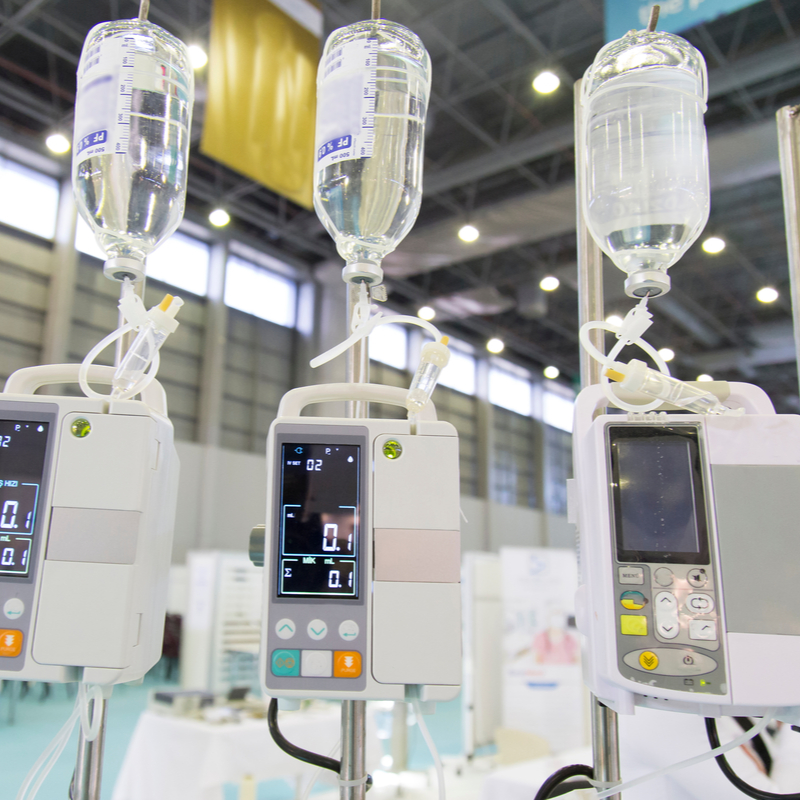 be required for regulatory reasons or simply to ensure sufficient quantities are available to meet demand. For example, a particular hospital unit might have 12 wheelchairs allocated to it and a requirement to never drop below 5. In this case user definable par levels would set the max wheelchair count at 12 and min level at 5. Configurable alerts would indicate an oversupply (perhaps other units are now missing wheelchairs) or an under supply (wheelchairs are not being returned fast enough). Alerts should be delivered using common tools such as email or texts. Underlying the idea of par levels is the ability to designate zones on a floor plan to delineate the boundaries of the unit. Ultimately, ensuring sufficient inventory relates directly to improved patient outcomes and higher satisfaction scores.
be required for regulatory reasons or simply to ensure sufficient quantities are available to meet demand. For example, a particular hospital unit might have 12 wheelchairs allocated to it and a requirement to never drop below 5. In this case user definable par levels would set the max wheelchair count at 12 and min level at 5. Configurable alerts would indicate an oversupply (perhaps other units are now missing wheelchairs) or an under supply (wheelchairs are not being returned fast enough). Alerts should be delivered using common tools such as email or texts. Underlying the idea of par levels is the ability to designate zones on a floor plan to delineate the boundaries of the unit. Ultimately, ensuring sufficient inventory relates directly to improved patient outcomes and higher satisfaction scores. - Asset Utilization. Hospitals tend to have 25% more mobile devices than other work settings. Considering there are now 14 devices at a patient bedside (up from 8 in 1995), efficient use of that equipment can save millions. RTLS allows utilization patterns to be analyzed using geolocational zone and motion and combined with data from 3rd party systems. To measure utilization using an RTLS solution requires basic analytics in the platform and the ability to distinguish “use” in a variety of ways based on asset type.
- Theft Deterrence. Creating alerts when high value assets leave designated areas will deter theft and reduce shrinkage. This can be accomplished by creating virtual zones in the RTLS software platform, or setup proximity detection on either side of exits (referred to as choke points). Consider tamper resistant tags that alert when removed from the asset. Software platforms should be able to integrate with building systems to turn on lights in the exit area and point security cameras for an instantaneous view of suspicious activity.
- View of Total Inventory and Its Use. As a CNO, CIO, or COO, a view of current inventory across the entire enterprise
 is challenging. Often inventory is recorded in islands of solutions at department levels. With visibility to all RTLS tagged assets, the RTLS system provides and instant count by asset class, assigned unit, and location. Assets no longer “in view” of the RTLS system provide insight into potential loss or shrinkage. Combined with utilization, inventory accounting provides an immediate view into the efficiency of assets currently deployed. Inventory accounting also provides a practical way to identify and locate all assets of a particular class that must be rounded up due to a product recall or maintenance.
is challenging. Often inventory is recorded in islands of solutions at department levels. With visibility to all RTLS tagged assets, the RTLS system provides and instant count by asset class, assigned unit, and location. Assets no longer “in view” of the RTLS system provide insight into potential loss or shrinkage. Combined with utilization, inventory accounting provides an immediate view into the efficiency of assets currently deployed. Inventory accounting also provides a practical way to identify and locate all assets of a particular class that must be rounded up due to a product recall or maintenance. - Workflow Analysis. RTLS solutions can track the movement of equipment over time creating a breadcrumb trail. These historic paths can be replayed as a visual tool for movement of assets as well as people. The resulting insights can lead to improvements in workflow and optimization staffs’ time spent with patients. Historic pathing can also be used to identify potential hoarding situations.
The Benefits of Healthcare Asset Tracking
To get started, one university hospital system in the Midwest used their existing wireless infrastructure to track 3,000 assets using AiRISTA tags. The material systems division was able to track assets such as $10,000 pumps across 8 hospitals totaling 5 million square feet. The 1st year reduction in rentals and lost equipment was $89,000 with another $14,600 in workflow savings. Temperature monitoring was introduced in the perioperative services group representing $48,000 in workflow savings in the first year. Surveys concluded that nurses saved 20 minutes per shift “hunting and seeking” mobile equipment. According to the Director of Technology, “Our initial deployments, and the potential new RTLS-supported applications, have a high ‘cool’ factor. The business units involved have been very appreciative of how we have helped them work more efficiently and cost-effectively.” Total savings attributed to the RTLS solution was $365,000 in the first year.
How AiRISTA can Help.
CMOs and CIOs face an unprecedented challenge to reverse financial drain due to the pandemic. Hospital systems that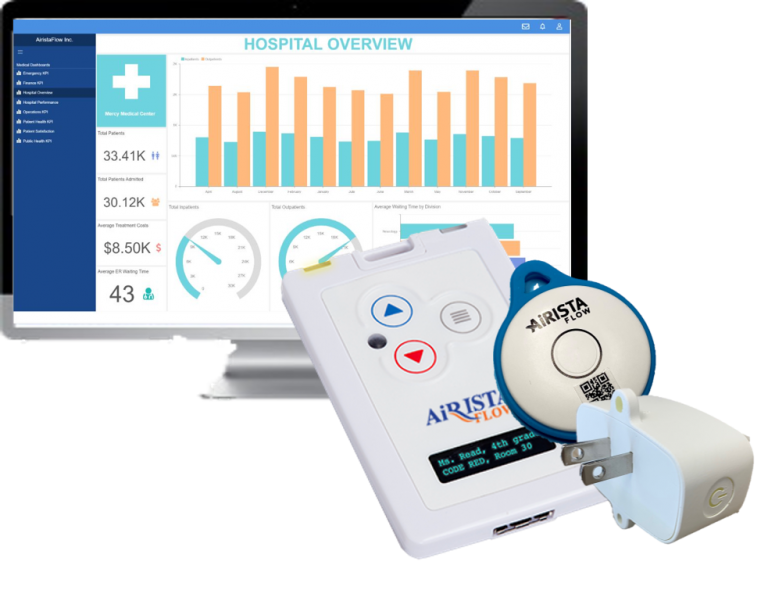 emerge stronger will make selective investments to increase efficiency and help ease the burden on clinicians. A recent Gartner® survey of healthcare CIOs found 58% plan to target “cost savings and operational efficiency” when investing in digital business technologies as a result of COVID. AiRISTA’s healthcare RTLS solutions have been proven for over 10 years to reduce waist and increase staff efficiency. Once the first use case has proven itself, subsequent use cases are introduced at a fraction of the cost. To learn more, click here for a white paper to learn about the benefits of healthcare asset tracking.
emerge stronger will make selective investments to increase efficiency and help ease the burden on clinicians. A recent Gartner® survey of healthcare CIOs found 58% plan to target “cost savings and operational efficiency” when investing in digital business technologies as a result of COVID. AiRISTA’s healthcare RTLS solutions have been proven for over 10 years to reduce waist and increase staff efficiency. Once the first use case has proven itself, subsequent use cases are introduced at a fraction of the cost. To learn more, click here for a white paper to learn about the benefits of healthcare asset tracking.
[1] Gartner, Emerging Technologies: Revenue Opportunity Projection of Indoor Location Services, Annette Zimmerman, Ranjit Atwal, June 2021

